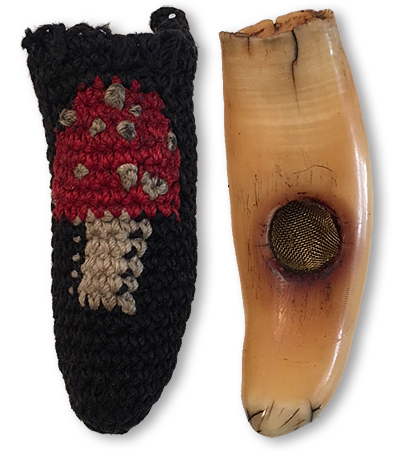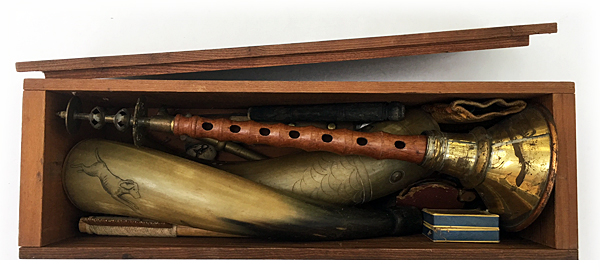Kurt collaborated with Carl Belz, a classmate at Princeton and later a university professor in art history, in the conception and writing of a book about Rock and Roll. Their efforts took place over several years, and when a complete outline of the book and sample pages were completed, Kurt submitted them to a number of publishers for consideration. Unfortunately, his proposal was repeatedly rejected, and after Kurt left UCLA, he turned over the project to Carl. Carl completed the project, and successfully found a publisher, Oxford University Press in New York; the first edition came out in 1969. Below is Carl’s acknowledgement of Kurt included in the first edition. The photo above is of the cover of the second edition, published in 1972.
Letters of Support for Dr. von Meier - UCLA 1967
When Kurt was denied tenure at UCLA there was an outcry among the university’s students, with whom Kurt was extremely popular. Petitions and letters of support swamped the Academic Senate and school administration, to no avail. A sampling of the letters reveal a thoughtful and appreciative student body, for whom Kurt was a breath of fresh air.
Letter from Carl Belz
Carl Belz was a fellow classmate of Kurt’s at Princeton, went on to teach art history at Mills College and later at the University of Buffalo in New York. He and Kurt collaborated on a book about rock and roll, which Carl later published under his own name. This letter from Carl to Kurt from 1966 deals with Kurt’s looming difficulties at UCLA, and Carl’s support and friendship is evident, as is his concern. Carl writes, “I'm afraid that you're going to run into very similar problems no matter where you go. It's just a thing with you and your personal style.” As time would tell, his concerns were not unfounded, as Kurt”s tenure was denied and his teaching contract with UCLA terminated. Significantly, Carl clearly understood Kurt, his strengths and weaknesses.
A 1970 Business Card
Even the custodian of the Archives of von Meier is subject to finding his own life scattered among Kurt’s lifelong collection of assorted memorabilia. Kurt called me by my nickname, “Bean,” until the day he died. This business card dates back to 1970, when I lived at 25th and Diamond Streets, a couple of blocks south of the Diamond Sutra Restaurant at 24th and Diamond, and maintained a home address for my graphic design studio. It was at the Diamond Sutra that I first met Kurt, and lo and behold, much to my surprise, I ran across this card while making yet another pass through one of Kurt’s file boxes. Notably, I had saved no copy of my own.
A List of Objects Moved after the 1979 Fire
Kurt von Meier was a special kind of pack-rat. His discerning eye for design combined with his fascination about tribal cultures and human rituals inclined Kurt to collect all sorts of objects. After the fire at the Diamond Sufi Ranch in 1979, Kurt had to move his collection to a new location, and being the ever-rigorous documentarian, he made a list of everything he had to relocate. Between 1979 and his death in 2011, he had added voluminously to his possessions, vastly increasing the objects, clothing, nick-knacks, artwork, photos, books and so forth that eventually filled every corner of Kurt’s living space. This list provides an insight into Kurt’s interests and obsessions.
SOMA: The Sacred Mushroom Weekend
The Diamond Sufi Ranch played host to a variety of groups and teachers during the early 70s, but this invitation was tied to a weekend devoted to Amanita muscaria, the sacred mushroom of the ancients. Kurt had taught a weekend seminar at Esalen on SOMA, but this ranch weekend was to be a hands-on affair, as this invite indicates.
PS: SANTA CLAUS IS A MUSHROOM.
Kurt von Meier in The Monterey Herald
OK, his last name is misspelled, but Kurt even showed up in the “30 Years Ago” portion of the “Olden times” section of the August 22, 1989 section of the Monterey Herald newspaper. An old friend sent him this clipping, and of course, Kurt saved it. The guy was a publicity magnet.
The Universal Life Church
The Universal Life Church was founded by Rev. Kirby J. Hensley in 1962 and offered ministry credentials to anyone who applied and sent a small financial offering. Of course, Kurt became a member, and received Certificate No. 66343, date May 2, 1962 making him an ordained minister. Regrettably, his first name is misspelled “Kirt.” Included here is his certificate, a printed sheet with information about the Universal Life Church, and a panel from one of its newsletters. The church remains in operation.
Karekare
Unexpected treats come this way now that Kurt’s archives are online; one such treat is this painting by Kurt, “Karekare” (Karekare is a black sand beach on the violent Tasman coast west of Auckland). The inquiry came through the contact form on this website and included this information: “The Chartwell Collection has acquired a work of Kurt's, Karekare, pva on Board, dated 1962, signed, 565 x 1200mm, from an Auckland auction of works from the John Perry Collection. John was a student of Kurt's at Elam.”
Golden Gate International Exposition - 1939
In 1939, when Kurt was five years old, he and his family visited the Golden Gate International Exhibition on San Francisco Bay, what we today call a “World’s Fair.” By all accounts, Kurt’s mother Dorothy loved the exhibition, and that prompted several return visits. The von Meier family was living in Berkeley at that time. (Left: Julian and Dorothy von Meier in 1940). This guidebook was passed down from Kurt’s mother to Kurt’s sister Kathie, who made it available for posting on this website.
Letters from James Keys (G. Spencer Brown)
For a while, Kurt von Meier and Walter (Clifford) Barney established an on-going relationship with James Keys, aka G. Spencer Brown, poet, mathematician and author of Laws of Form. They exchanged letters and corresponded after Brown’s attendance at the AUM Conference at Esalen in 1973. In these two letters from Brown in September of 1976, he makes special note of Kurt and Walter’s appreciation and understanding of his work. “Before enlightenment people deal only in opinions, afterwards there can be only an exchange of gifts, as in heaven. It is important how pretty the ribbons are. You and Kurt are the only members of the team with any clout who have realized this.”
"The Tooth"
One of Kurt’s most prized—and well-used—possessions was his whale’s tooth pipe (actual size, 2 3/4” in length). Discolored by years of resinous smoke and oils from being handled, when “The Tooth” (as it was affectionately called) came out, it was an invocation of the sacred, and an indication of moving into the wild and intoxicated realm Kurt’s Dionysian self so enjoyed. Kurt’s friend Paula Reinking knitted a special “sock” to protect The Tooth, emblazoned with a depiction of an Amanita Muscaria mushroom, of course!
The Square Root of Minus One
Kurt was so intrigued with the imaginary number “i” symbolized by this expression he had a T-shirt made. Kurt had all sorts of T-shirts in his wardrobe—ranging from declarative to contemplative—yet another dimension of his expressive personality. The same was true of hats, and for that matter, socks, shirts, pants, belts and so forth. Not the type to just throw on anything, Kurt thought about how he dressed, and had the closet of a clothes horse.
Los Angeles Times Coverage of von Meier's "Dismissal" from UCLA in 1967
This article from March 4, 1967 covers Kurt von Meier’s “dismissal” from UCLA, an event that would change the course of Kurt’s teaching career. Reporter Art Seidenbaum notes, “To the study of painting and sculpture von Meier brought added attractions; underground movies, avant-garde poetry, visiting Pop painters and—most lively of all in a curriculum already emblazoned with living color—throbbing rock 'n' roll musicians.”
Kurt's Navajo Blankets
Kurt was an avid collector, particularly fond of textiles and blankets. Having traveled to the southwest to visit the Hopi, he acquired a large number of antique Navajo blankets of extraordinary beauty and significance. He discussed their use and meaning in his lectures, and on chilly nights at the Diamond Sufi Ranch he'd sleep warmly beneath them. Read more to see some examples from his collection (images courtesy of Ishi von Meier, Kurt's grandson).
Tarjeta de Turista Para Multiples Viajes
A Kvon Meier Treasure Box
Kurt was a collector. He'd find objects and relics, then place them in containers and boxes which he'd squirrel away in closets, cabinets and hiding places known only to him. From time to time he'd pull one out and talk about each item so contained. Some treasure boxes were filled with Native American artifacts, others with bones and ivory. Every item had a story. This box held horns, mostly. For a closer look at the contents, read more.
A Postcard from Artist Ken Magri
Kurt was Ken Magri's Masters Degree advisor in the late 1970s at Sacramento State University. Ken went on to enjoy a career of art, photography, teaching, writing and commentary. When Kurt was selected as the head of the Art Department in 1988, he received this postcard from Ken. (Ken has recently contributed his recollection of Kurt).
Hanging Out at the Diamond Sufi Ranch
Want to spend a while hanging out at the Diamond Sufi Ranch in the early-seventies? Here's a recording that allows you to do it; Kurt often put a reel in his Nagra, set it to record and let it run.
Begin the audio, lie down on the floor with a comfortable pillow behind your head, close your eyes and join the ranch family and guests as they hang out on the deck in the grove of timber bamboo, smoke, eat, laugh and play music. Visting the ranch, Harish, an Indian musician and singer, serenades the group while the ranch flute, as Kurt says, "finds" a player. Drums get played, fruits get eaten, pipes get smoked. Just another day in paradise.
Audio runs about 30 minutes.
A 1966 Letter from Roberta Bernstein to Kurt about Andy Warhol
By 1966 Kurt had already gained recognition as an up-and-coming voice in the art historian community. His regular contributions to Art International magazine along with the attention he gained at UCLA for his unconventional teaching approach helped Kurt establish relationships with others with aspirations in his chosen field. Among them was the young Roberta Bernstein, who felt great affection for Kurt; Roberta did indeed fulfill her aspirations and today is a recognized leader in the field art history. This charming 1966 letter about her visit with Andy Warhol has its place in the history of both Roberta and Kurt.































